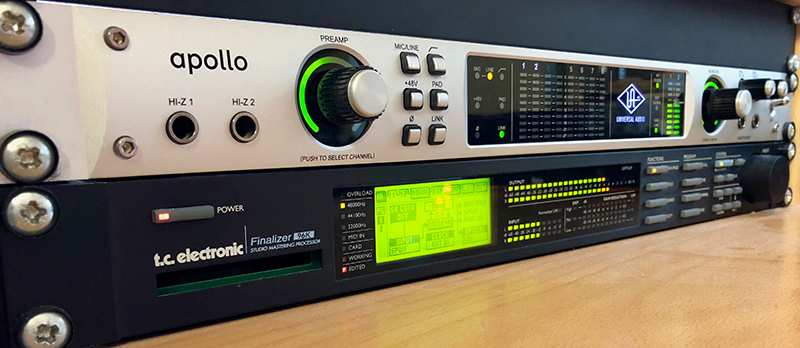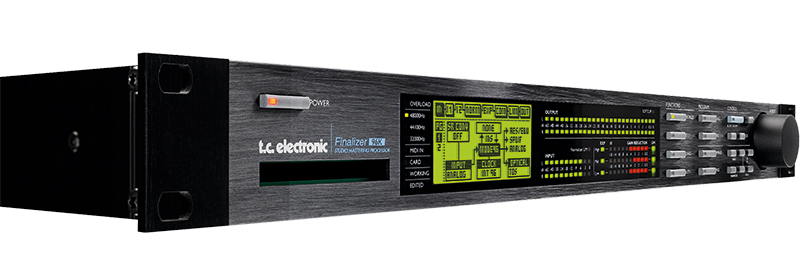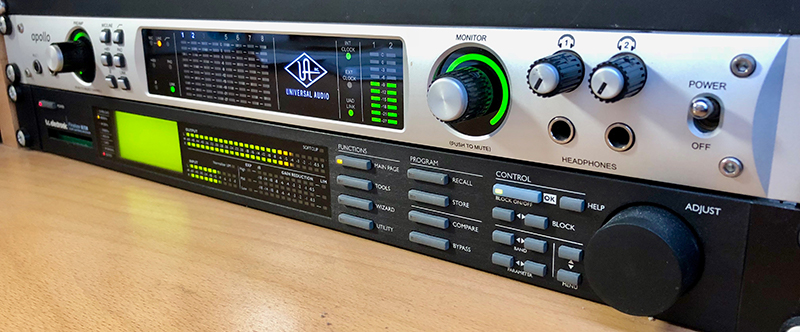Vintage Rewind: TC Finalizer
In 1996, TC Electronics sent shocks through waveforms with the one-box music making solution known as The Finalizer, as Dave Gale explains…. With a name like Finalizer, you wouldn’t be daft for thinking that it was some sort of character from a Hollywood film, but amongst us home studio types, the Finalizer (or its successor, […]

In 1996, TC Electronics sent shocks through waveforms with the one-box music making solution known as The Finalizer, as Dave Gale explains….

With a name like Finalizer, you wouldn’t be daft for thinking that it was some sort of character from a Hollywood film, but amongst us home studio types, the Finalizer (or its successor, the Finalizer 96k) made the most tremendous difference to the quality of output and speed of workflow.
Lurking around the back, this 1U 19″ rack-mounted device offered plenty to assist the home and pro-end user; SPDIF on RCA Phonos, AES/EBU on balanced connectors, as well as balanced analogue input and outputs. Once you’d managed to get your head around that lot, the basic conversion from analogue to digital, or vice versa, was staggeringly good, so much so I know people who immediately started to use the Finalizer as their A-D/D-A convertor box for conversion duties alongside their chosen DAW.
Hub like paradise
It also offered MIDI, light-pipe and Word Clock connectivity, making it something of a hub-like paradise for the studio. But being honest, the connectivity part of the equation was only really the bonus prize, as it was the inner workings that truly had the capacity to impress, or even compress.

The then-generous display was your first port of call for making the settings that applied to your situation. Choose your input source and once audio was present, the front panel would light up like the proverbial Christmas tree, with generous rows of LEDs to offer clues. It was very easy to see and adjust the inputted signal, while also monitoring the effect that the Finalizer was having upon your signal.
The longer strip of Output LEDs would give the biggest clue here, with indication of soft clipping should the signal get too lively, but the greatest use to me was the triple band compression, allowing me to see how hard the Low, Mid and High aspects of my mix were being compressed.
Second set of ears
Back in the day, when I was working in a home studio on more of a shoe-string, this played a vital part in helping me understand how I was overcooking the lower frequencies in mixes, thanks to the shortcomings in my monitoring and room acoustics.
I was such a devotee to the Finalizer, I used to tell my friends that it was like having another set of ears, but moreover I really liked the fact that the very usable presets could be tweaked to suit your needs, when in a hurry, or you could choose to go full bespoke and build a patch from scratch, if deadlines for media work would allow.
But apart from the prerequisite compression and five-band EQ, the normalise feature provided the perfect hassle-free way to ensure that, combined with the other elements, you could get that classy commercial sound without the need to hire Bob Ludwig to do the honours for you.
But there was another secret weapon at the users disposal, which I personally used ad nauseam! Lurking in the depths of the menu system was the DRG, or Digital Radiance Generator to the uninitiated.

What this feature actually represented was the application of second harmonic distortion across a mix, to a degree which was dialled in between 0 and 10, hence mimicking the use of analogue tape. Overcook it and it sounded horrendous, but liberally apply it to the tune of around 7 or 8, and it was just enough spice to make it sound expensive in that analogue way that was firmly coming back into fashion.
Consequently, I had this hard-wired into most of my patches, with the bypass facility allowing me to hear my track before and after, as all of the elements came kicking back into life, one after another.
I still have my Finalizer 96K, although I use it far less, with mastering software options being as they are, but I can’t quite bring myself to take it out of my signal chain. I mean, you wouldn’t want to chop off your second pair of ears, would you?